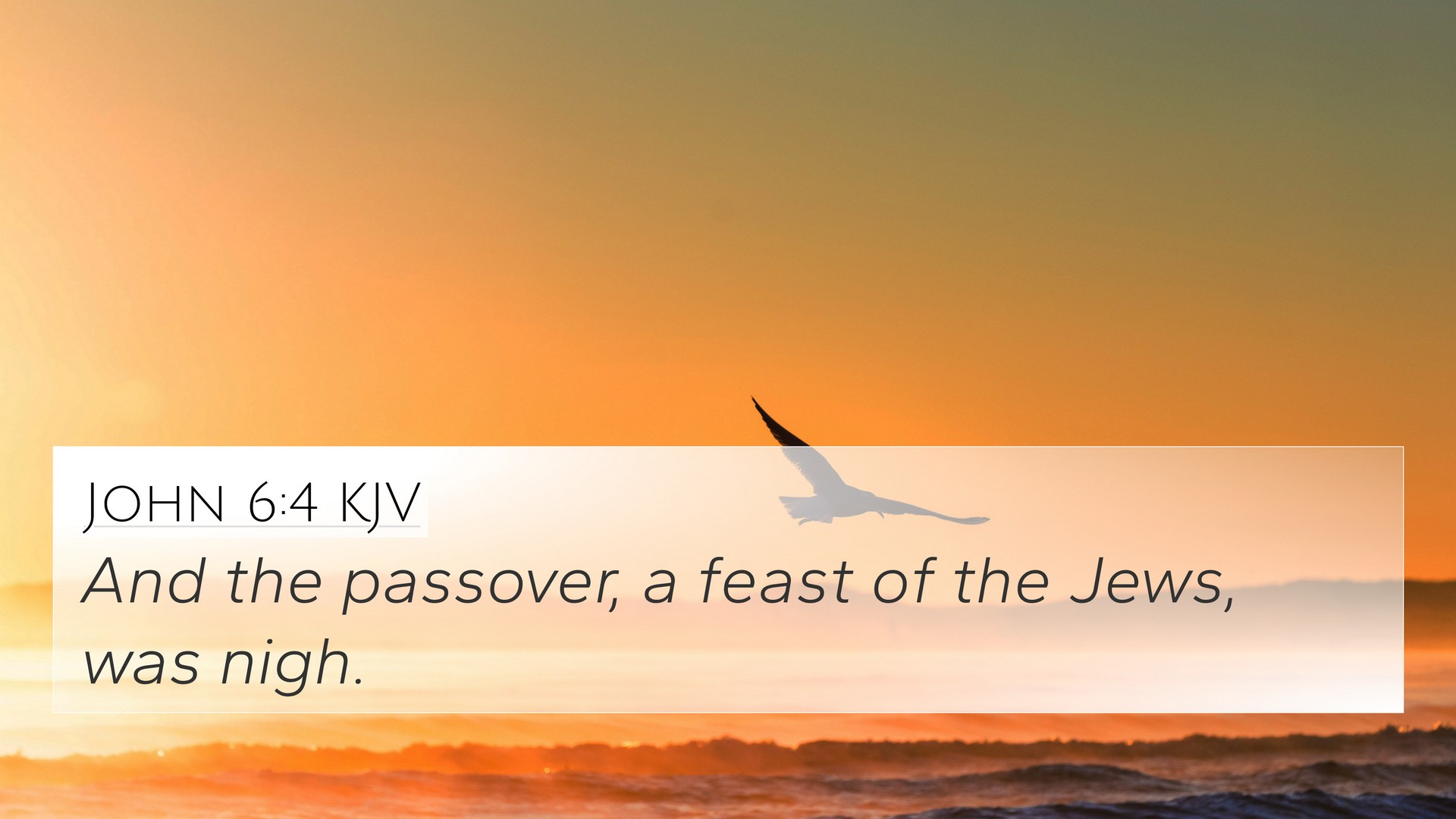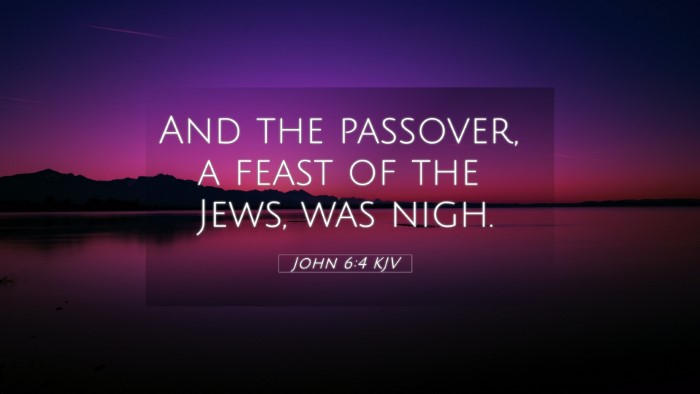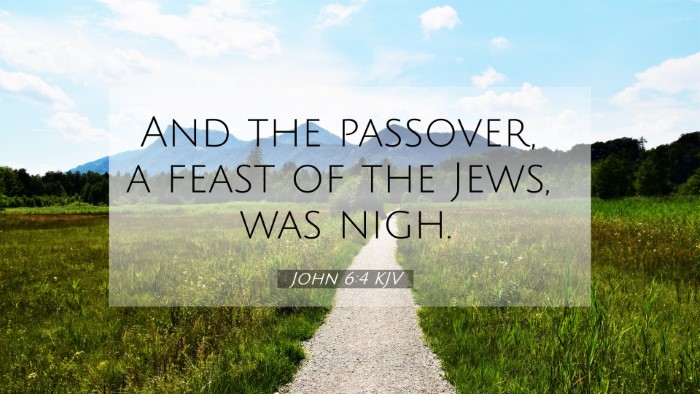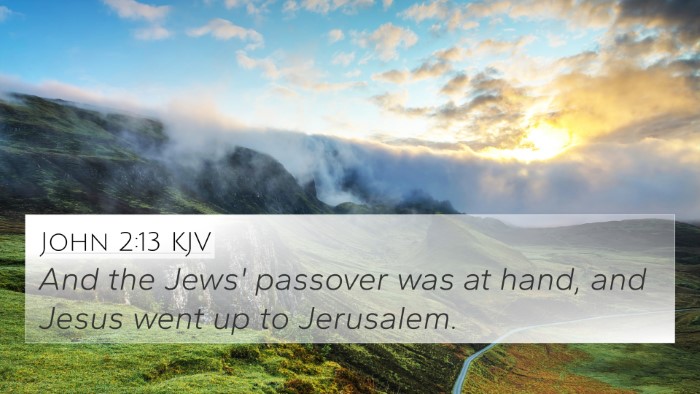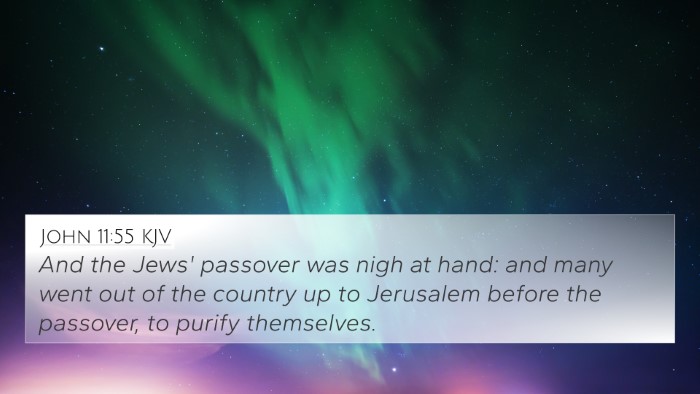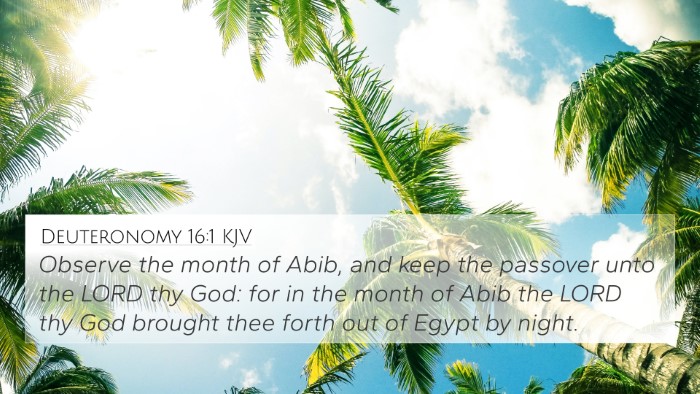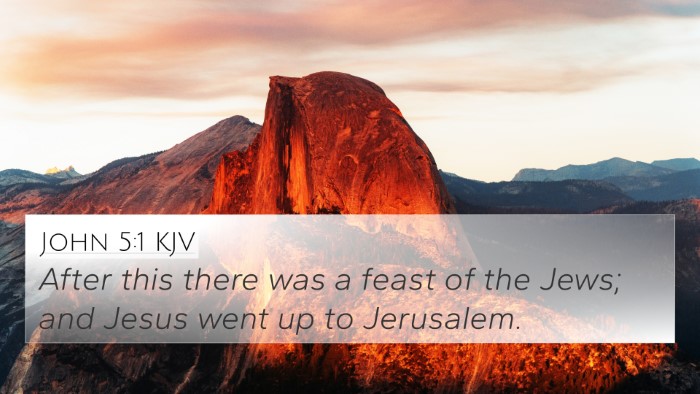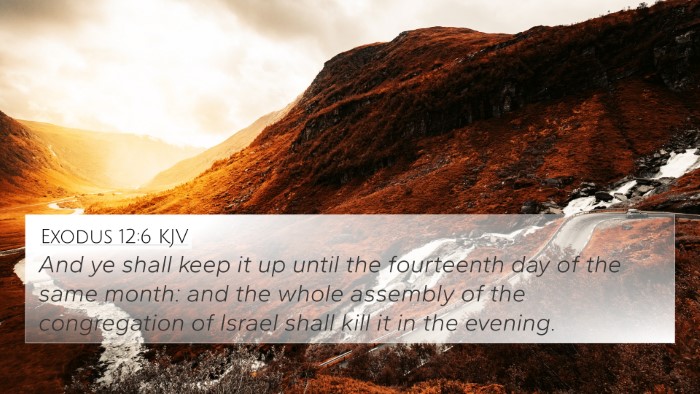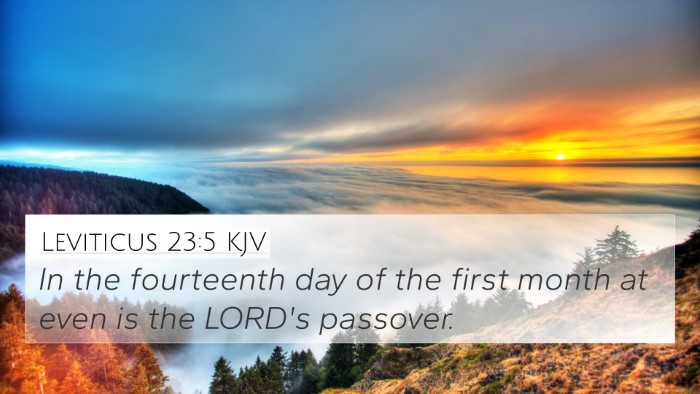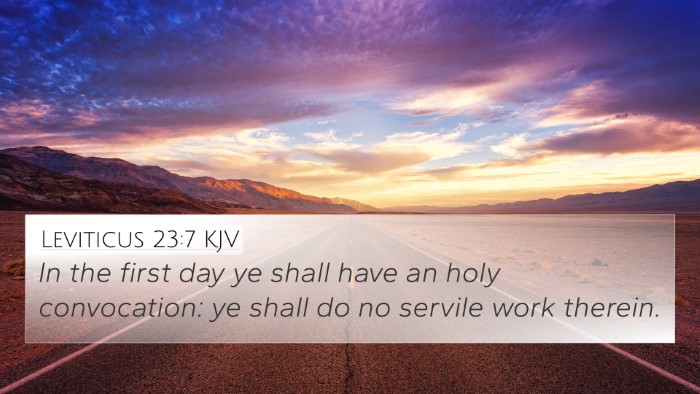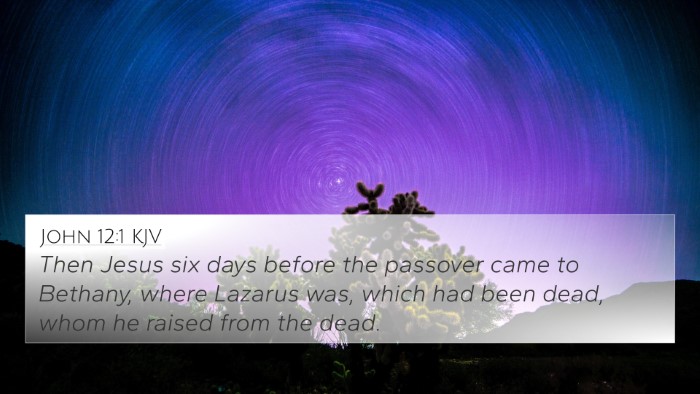Understanding John 6:4
Verse: John 6:4 states, "And the passover, a feast of the Jews, was nigh." This verse sets the stage for a significant event in the life of Jesus, highlighting the Jewish tradition of Passover, which serves as a backdrop for the miraculous feeding of the 5,000 and Jesus' subsequent teachings.
Contextual Analysis
Understanding the context of John 6:4 is crucial for grasping the broader narrative within the Gospel of John. Matthew Henry observes that this verse introduces a period of heightened religious significance, as Passover symbolizes deliverance and God's covenant with His people. It prepares the reader for the forthcoming miracle that will demonstrate Jesus' role as the spiritual bread of life.
Symbolism of Passover
Passover, as noted by Albert Barnes, represents the liberation of the Israelites from Egyptian bondage. In the context of John 6, it anticipates Jesus’ ultimate sacrifice and the establishment of a new covenant through His body and blood—echoing the themes of deliverance and sustenance.
Thematic Connections
- John 1:29: “Behold the Lamb of God, who takes away the sin of the world!” – This verse connects to the Passover lamb, foreshadowing Jesus’ sacrificial role.
- Exodus 12:13: The blood of the lamb protecting the Israelites serves as a typology of Christ’s redemptive work.
- Matthew 26:28: "This is my blood of the covenant, which is poured out for many for the forgiveness of sins." – Affirming the new covenant's foundation, paralleling with Passover themes.
- 1 Corinthians 5:7: “For Christ, our Passover lamb, has been sacrificed.” – Directly identifies Jesus with the Passover lamb.
- Luke 22:15-16: Jesus expresses His deep desire to eat the Passover with His disciples, signifying the importance of this event in the context of His impending sacrifice.
- Hebrews 9:12: "He entered once for all into the holy places, not by means of the blood of goats and calves but by means of his own blood." – Highlighting the finality of Jesus' sacrifice compared to the Old Testament practices.
- John 6:35: Jesus proclaims that He is the "bread of life," which links back to the sustenance theme initiated in this verse.
Comparative Bible Verse Analysis
When we perform a comparative analysis of John 6:4 with these cross-references, we can better comprehend the rich tapestry of Biblical themes. Adam Clarke emphasizes the importance of cross-referencing to form a cohesive understanding of Scripture, where the connections between John 6:4 and the aforementioned verses reveal the depth of God's plan for salvation.
Inter-Biblical Dialogue
The dialogue between the Old and New Testaments is essential for grasping Biblical theology. The use of Passover as a recurring theme illustrates how God’s redemptive narrative is woven throughout scripture, linking the Exodus story to the life and ministry of Jesus. This illustrates the importance of scriptural cross-referencing in Bible studies, as they unveil deeper understanding and meaning.
Tools for Bible Cross-Referencing
Utilizing a bible concordance or bible cross-reference guide can significantly enhance one’s study. These tools allow readers to find relevant verses that connect to key themes or messages. They also aid in identifying connections between Old and New Testament scriptures.
Conclusion
John 6:4 serves as a powerful reminder of the historical significance of Passover and its profound implications for understanding Jesus’ mission. By cross-referencing biblical texts, readers can discover these thematic connections and explore how scripture interacts with itself, enriching their understanding of God's Word.
Additional Thoughts
In closing, this verse not only prepares the reader for the miracles that follow but also invites reflection on how Jesus fulfills the Old Testament prophecies and practices. Understanding the interconnectedness of the scriptures through cross-referencing can deepen faith and enhance spiritual insight.
